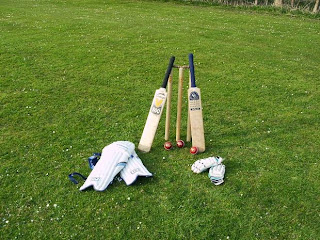- England have been playing friendly matches against Australia since 1877. It was in 1882, however that Australia managed to beat them. This resulted in a newspaper report of the match, in which a journalist called Reginald Shirley Brooks wrote a mock obituary to English cricket. "In affectionate remembrance of English cricket" he wrote, "which died at The Oval, 29th August, 1882. Deeply lamented by a large circle of sorrowing friends and acquaintances. The body will be cremated and the Ashes taken to Australia". England’s captain Ivo Bligh pledged to regain the ashes; the English media therefore dubbed the next tour the quest to regain the Ashes.
- Although winning teams often hold aloft a terracotta urn the actual trophy they get to keep is a Waterford Crystal trophy shaped like an urn.
- The original terracotta urn is kept on permanent display at the MCC Museum at Lord's. It is the symbolic representation of the ashes - it is about 6 inches (150 mm) tall and weighs about 125 grams. It may have originally been a perfume jar. Nobody knows what is actually inside, but most people believe it's the ashes of a wooden bail. Some say it's the ashes of a cricket ball. Nobody knows for sure. There's a verse written on it - for what the verse says, see the end of this post.
- The urn has a love story attached to it as well as a story about cricket. When England won a test series in Australia the urn was presented to Ivo Bligh by a group of women in Melbourne. One of them was called Florence Murphy, and Ivo was smitten with her. He extended his stay in Australia in order to woo her, and five weeks later, they were engaged. The couple kept it on the mantelpiece of their home until Bligh died. His widow then donated it to the Marylebone Cricket Club.
- The two countries take it in turns to hold the series, which usually consists of five matches played at different grounds. In Australia these are currently the Gabba in Brisbane, Adelaide Oval, the WACA in Perth, the Melbourne Cricket Ground and the Sydney Cricket Ground. When Australia are hosting the series takes place in our winter. Traditionally, there will be a test in Melbourne on Boxing Day one in Sydney at New Year. In Britain they choose from Old Trafford in Manchester, The Oval, Lord's, Trent Bridge at West Bridgford, Nottinghamshire, Headingley in Leeds, Edgbaston in Birmingham, Sophia Gardens in Cardiff, and the Riverside Ground in Chester-le-Street, County Durham.
- To win the Ashes, a team must win the series outright. If it's a draw, the previous winners retain the Ashes. There have been 69 series at time of writing with Australia and England winning 32 each, the other five being draws. Although in terms of numbers of matches won the teams are pretty equal, in terms of the amount of time the Ashes have been held, Australia is in the lead with 78.5 years, compared to England's 53.5 years.
- There is also a Women's Ashes, which has been played since 1934. In this contest, Australia has won seven series, England five, and there have been seven draws.
- Sir Donald Bradman holds the records for the most runs in Ashes history (5028), highest batting average (89.78), most hundreds (19), most fifties (31), most runs in a series (974), and the highest wicket partnership (451). The biggest win was in 1938 when England declared 903/7, and the lowest score was 36, Australia's score in 1902.
- The Ashes feature in Douglas Adams's novel Life, the Universe and Everything. The urn is stolen by alien robots, as the burnt stump inside is part of a key needed to unlock the "Wikkit Gate" and release an imprisoned world called Krikkit.
The
verse on the urn
When
Ivo goes back with the urn, the urn;
Studds,
Steel, Read and Tylecote return, return;
The
Welkin will ring loud,
The
great crowd will feel proud,
Seeing
Barlow and Bates with the urn, the urn,
And
the rest coming home with the urn.
New!
Jack Ward, President of Innovia, owes his life twice over to the enigmatic superhero, dubbed Power Blaster by the press. No-one knows who Power Blaster is or where he comes from - and he wants it to stay that way.
Scientist Desi Troyes has developed a nuclear bomb to counter the ever present threat of an asteroid hitting the planet. When Ward signs the order giving the go ahead for a nuclear test on the remote Bird Island, he has no inkling of Troyes' real agenda, and that he has signed the death warrants of millions of people.
Although the island should have been evacuated, there are people still there: some from the distant continent of Classica; protesters opposed to the bomb test; and Innovians who will not, or cannot, use their communication devices.
Power Blaster knows he must stop the bomb from hitting the island. He also knows it may be the last thing he ever does.
Meanwhile in Innovia, Ward and his staff gather to watch the broadcast of the test. Nobody, not even Troyes himself, has any idea what is about to happen.
Part One of The Raiders Trilogy.


No comments:
Post a Comment